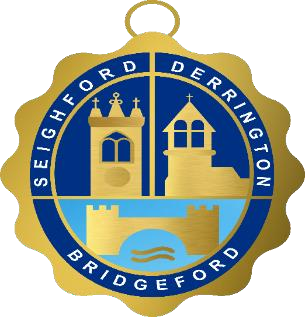History
William White’s History, Gazetteer and Directory of Staffordshire (1851) gave the following description of Seighford and its inhabitants:
Seighford lies three and a half miles north-east of Stafford. It forms a highly cultivated district, containing 803 inhabitants, and 3,830 acre of land. On the west side of the village lies Seighford Hall the residence of Francis Eld, Esq, lord of the manor, and owner of most of the land. Its Parish Church, St Chad, was originally built around the time of the Norman Conquest. Some historians maintain there was a wooden Saxon church which was built around 650 AD but the earliest stone remains are Saxon with two four-column arcades in early Norman style. Shortly before 1600 the original Norman tower collapsed and the south side of the aisle and the main entrance were destroyed. The church was partly rebuilt in brick in about 1610 by a local builder named Clay. About 100 years ago, more building took place adding a brick tower, five bells and a clock.
RAF Seighford was a Royal Air Force airfield that was opened in 1943 and closed in 1947. Remains of the control tower and some outbuildings survive and part of the site is still used by small aircraft, particularly gliders using a small runway close to the village of Seighford.
The parish register commences in 1561. The original registers for the period 1561-1879 (baptisms), 1561-1945 (marriages) and 1561-1925 (burials), together with Banns for the period 1754–1812, are deposited at Staffordshire Record Office.
Two men who rose to prominence were born in Seighford:
Richard Cocks (1566–1624) head of the British East India trading post in Hirado Japan, 1613 to 1623; was baptised at St Chad’s, Seighford.
Sir Edwin Cooper Perry (1856–1938) a physician and medical administrator, was the only son of Edwin Cresswell Perry (1828–1899), who became vicar of Seighford in 1861. Sir Edwin was brought up in the village and became Vice Chancellor of London University from 1917–19.
